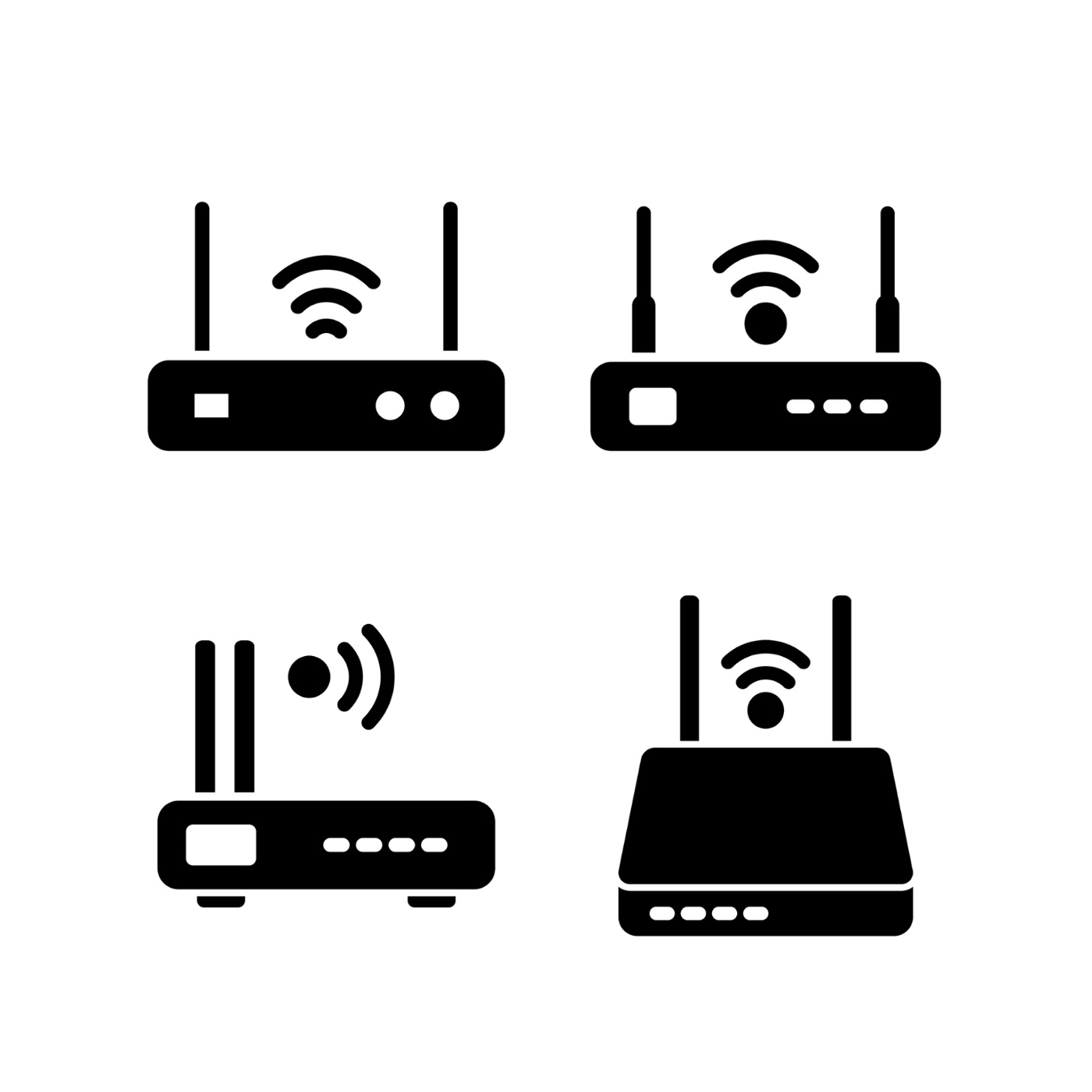Monitor IoT Device Behind Router: Your Ultimate Guide To Network Security
Hey there, tech-savvy friend! Ever wondered how you can keep an eye on all those IoT devices hiding behind your router? Monitoring IoT devices behind your router is not just about curiosity; it's about staying safe in this digital jungle. Imagine this: you’ve got a smart fridge, a voice assistant, and maybe even a smart doorbell. They’re all connected to your Wi-Fi, but do you really know what they’re up to? Let’s dive into this world of network security and find out how you can monitor these gadgets without losing your mind.
Let’s face it, the Internet of Things (IoT) is everywhere. From smart thermostats to fitness trackers, IoT devices are making our lives easier. But here’s the catch—they’re also potential security risks. If you’re not paying attention, these devices could be leaking your personal data or even opening doors for hackers. That’s why learning how to monitor IoT devices behind your router is crucial. It’s like having a security guard for your home network.
Now, before we get into the nitty-gritty, let’s talk about why this matters. In today’s world, your data is gold. Hackers are always looking for vulnerabilities, and IoT devices are often the weakest link. By monitoring them, you’re not only protecting your data but also ensuring your privacy. So, buckle up because we’re about to take you through everything you need to know about monitoring IoT devices behind your router.
- Jetblue Flight 1760 Incident The Inside Story You Wonrsquot Forget
- Monkey And Lion Rage Bait Meme The Hype The History And Why Itrsquos Taking Over The Internet
Understanding IoT Devices and Their Role in Your Network
Alright, let’s break it down. IoT devices are basically any gadgets that connect to the internet to send or receive data. Think of them as little workers in your digital house, each with its own job. But just like real workers, they need supervision. These devices communicate through your router, which acts as the gateway to the internet. Understanding how they interact with your network is the first step in monitoring them.
Why IoT Devices Need Monitoring
Here’s the deal: IoT devices are often less secure than your computer or smartphone. They’re built with convenience in mind, not security. This makes them easy targets for hackers. By monitoring these devices, you can spot unusual activity and stop potential threats before they become problems. Plus, you’ll have a clearer picture of what’s happening in your network, which is always a good thing.
Tools and Techniques for Monitoring IoT Devices Behind Router
Now that you understand the importance of monitoring, let’s talk about the tools and techniques you can use. There are plenty of options out there, from software solutions to hardware gadgets. The key is finding the right one for your needs. Let’s explore some of the most effective methods.
- Rage Bait Monkey And Tiger The Untold Story Thats Got Everyone Talking
- Macaulay Culkin Height The Inside Scoop On Hollywoods Beloved Child Star
Network Monitoring Software
- Wireshark: This is a powerful tool for analyzing network traffic. It allows you to see exactly what’s going on in your network, including IoT devices. However, it requires some technical know-how.
- PRTG Network Monitor: A user-friendly option that offers real-time monitoring of your network. It’s great for beginners who want an easy way to keep an eye on their IoT devices.
- Fing: A mobile app that makes network monitoring a breeze. It scans your network and provides detailed information about connected devices.
Steps to Monitor IoT Devices Behind Router
Ready to get started? Here’s a step-by-step guide to help you monitor your IoT devices:
Step 1: Access Your Router’s Admin Panel
Most routers come with an admin panel where you can manage connected devices. To access it, open your browser and type in the router’s IP address. Usually, it’s something like 192.168.1.1 or 192.168.0.1. Once you’re in, look for a section that lists all connected devices. This will give you a quick overview of what’s on your network.
Step 2: Use Network Scanning Tools
Network scanning tools like Fing or Angry IP Scanner can provide more detailed information about your connected devices. These tools can tell you things like device names, IP addresses, and even MAC addresses. It’s like having a detective in your pocket.
Security Risks Associated with IoT Devices
Let’s talk about the elephant in the room: security risks. IoT devices are notorious for their lack of security features. Here are some of the most common risks:
- Weak Passwords: Many IoT devices come with default passwords that are easy to guess. If you don’t change them, you’re basically rolling out the red carpet for hackers.
- Firmware Vulnerabilities: Firmware is the software that runs on your IoT devices. If it’s not updated regularly, it can have vulnerabilities that hackers can exploit.
- Data Leakage: Some IoT devices collect a lot of data about you and your habits. If this data isn’t properly secured, it could end up in the wrong hands.
Best Practices for Securing IoT Devices
Now that you know the risks, let’s talk about how to secure your IoT devices:
Change Default Passwords
This one’s a no-brainer. As soon as you set up a new IoT device, change the default password to something strong and unique. Avoid using easily guessable information like your name or birthdate.
Regularly Update Firmware
Just like your smartphone or computer, IoT devices need regular updates to stay secure. Check for firmware updates regularly and install them as soon as they’re available.
How to Detect Unauthorized Access
Unauthorized access is every network admin’s nightmare. But don’t worry; there are ways to detect and prevent it:
- Check Device Logs: Most routers keep logs of network activity. By reviewing these logs, you can spot any suspicious activity.
- Set Up Alerts: Many network monitoring tools allow you to set up alerts for unusual activity. This way, you’ll know right away if something fishy is going on.
Network Segmentation: A Powerful Security Tool
Network segmentation is a technique that separates your IoT devices from your main network. This means even if a hacker gains access to one of your IoT devices, they won’t be able to get into your more sensitive data. It’s like having a moat around your digital castle.
How to Implement Network Segmentation
Most modern routers support network segmentation. Check your router’s manual or online support for instructions on how to set it up. It might take a bit of effort, but the added security is worth it.
Future Trends in IoT Device Monitoring
The world of IoT is evolving rapidly, and so are the tools for monitoring these devices. Here are some trends to watch out for:
- AI-Powered Monitoring: Artificial intelligence is starting to play a bigger role in network monitoring. These systems can learn your network’s behavior and spot anomalies faster than humans.
- Blockchain for Security: Blockchain technology is being explored as a way to secure IoT devices. It could provide a decentralized and tamper-proof way to manage device data.
Conclusion: Take Control of Your Network
So, there you have it—a comprehensive guide to monitoring IoT devices behind your router. By following the steps and best practices outlined here, you can take control of your network and protect your data. Remember, security is an ongoing process. Stay informed, stay vigilant, and don’t hesitate to invest in the right tools.
Now it’s your turn! If you found this article helpful, share it with your friends or leave a comment below. And if you want to dive deeper into network security, check out our other articles. Stay safe out there, tech warrior!
Table of Contents
- Understanding IoT Devices and Their Role in Your Network
- Tools and Techniques for Monitoring IoT Devices Behind Router
- Steps to Monitor IoT Devices Behind Router
- Security Risks Associated with IoT Devices
- Best Practices for Securing IoT Devices
- How to Detect Unauthorized Access
- Network Segmentation: A Powerful Security Tool
- Future Trends in IoT Device Monitoring
- Conclusion: Take Control of Your Network



Detail Author:
- Name : Charley Kshlerin
- Username : ernestine.anderson
- Email : giovanna83@conroy.info
- Birthdate : 1982-04-17
- Address : 605 Kris Plaza Apt. 237 West Stonefort, OH 27459-2519
- Phone : (754) 670-8818
- Company : Kerluke, Adams and Fay
- Job : Motor Vehicle Operator
- Bio : Cupiditate soluta hic mollitia impedit excepturi occaecati. Iusto omnis cupiditate voluptas quia tempora. Nisi perspiciatis ut blanditiis. Dolorum sit autem voluptatem ratione.
Socials
twitter:
- url : https://twitter.com/brenna.heller
- username : brenna.heller
- bio : Praesentium numquam atque nihil rem aliquam in eum deleniti. Alias necessitatibus alias deleniti aut in. Necessitatibus hic ad eum perspiciatis quo eum.
- followers : 614
- following : 1739
facebook:
- url : https://facebook.com/brennaheller
- username : brennaheller
- bio : Natus non asperiores eaque veritatis dolorem.
- followers : 6794
- following : 2135
linkedin:
- url : https://linkedin.com/in/hellerb
- username : hellerb
- bio : Eaque blanditiis id aut quo.
- followers : 2551
- following : 989
tiktok:
- url : https://tiktok.com/@brenna_heller
- username : brenna_heller
- bio : Et alias eos sed minus et quia et.
- followers : 5286
- following : 1013
instagram:
- url : https://instagram.com/brennaheller
- username : brennaheller
- bio : Sit rerum earum vel quas aut animi quia. Et voluptatem deleniti tempora nihil exercitationem.
- followers : 4709
- following : 1030